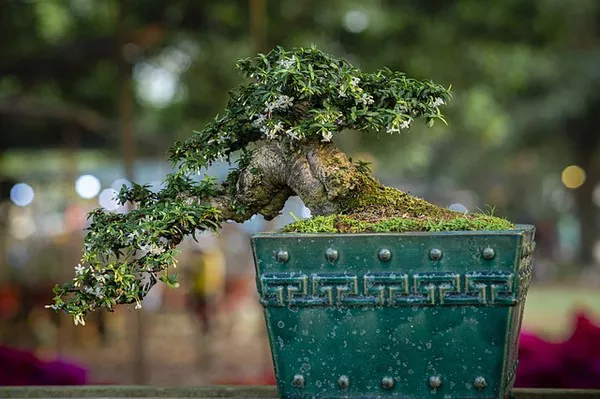Bonsai, with its rich history and timeless appeal, has captured the hearts of enthusiasts worldwide. These miniature trees, meticulously cultivated and shaped over time, bring a sense of tranquility and beauty to any space. While bonsai traditionally thrive outdoors, indoor cultivation has become increasingly popular, allowing enthusiasts to enjoy these living artworks in the comfort of their homes. However, not all bonsai species are well-suited for indoor conditions. In this comprehensive guide, we’ll explore some of the best bonsai species for indoor cultivation, considering factors such as light requirements, humidity levels, and overall care needs.
Understanding Indoor Bonsai Cultivation
Before delving into specific species, it’s essential to understand the unique requirements of indoor bonsai cultivation. Unlike outdoor bonsai, which benefit from natural sunlight, indoor bonsai often rely on artificial lighting sources. Additionally, maintaining adequate humidity levels can be challenging indoors, especially in dry climates or heated environments. Therefore, selecting the right bonsai species is crucial to ensuring their health and vitality in indoor settings.
Key Considerations for Indoor Bonsai Selection
When choosing bonsai species for indoor cultivation, several factors must be taken into account:
1. Light Requirements: Most indoor bonsai species require ample light to thrive. While some species can tolerate lower light conditions, providing adequate light is essential for healthy growth and development.
2. Humidity Tolerance: Indoor environments typically have lower humidity levels than outdoor settings. Therefore, selecting bonsai species that can tolerate moderate to low humidity is essential for indoor cultivation success.
3. Size and Growth Rate: Consider the available space and desired size of your indoor bonsai. Some species grow more slowly and remain compact, making them ideal choices for indoor display.
4. Maintenance Needs: Different bonsai species have varying maintenance requirements, including pruning, watering, and repotting schedules. Choose a species that aligns with your skill level and available time for care.
5. Temperature Sensitivity: Indoor bonsai species should be able to tolerate fluctuations in temperature commonly found indoors. Avoid species that require strict temperature control unless you can provide suitable conditions.
By carefully considering these factors, you can select the best bonsai species for indoor cultivation that will thrive in your specific environment.
Top Bonsai Species for Indoor Cultivation
Ficus Retusa (Ficus microcarpa)
Ficus Retusa, also known as the Chinese Banyan or Ginseng Ficus, is a popular choice for indoor bonsai enthusiasts. This species is prized for its glossy, dark green leaves and strong growth characteristics. Ficus Retusa is highly adaptable to indoor conditions, tolerating low light and moderate humidity levels. It responds well to pruning and shaping, making it an excellent choice for bonsai beginners.
Ficus Benjamina (Weeping Fig)
Another member of the Ficus genus, Ficus Benjamina, commonly known as the Weeping Fig, is a versatile indoor bonsai species. With its elegant, drooping branches and small, glossy leaves, Ficus Benjamina adds a touch of grace to any indoor space. This species thrives in bright, indirect light and can tolerate occasional fluctuations in humidity. Regular pruning helps maintain its desired shape and size.
Crassula Ovata (Jade Tree)
Crassula Ovata, or the Jade Tree, is a succulent bonsai species known for its thick, fleshy leaves and resilient nature. Native to South Africa, the Jade Tree is well-suited for indoor cultivation, requiring minimal watering and maintenance. This species prefers bright light but can tolerate lower light conditions. With its compact growth habit and ease of care, the Jade Tree is an excellent choice for beginners and experienced bonsai enthusiasts alike.
Zelkova Serrata (Japanese Elm)
Zelkova Serrata, commonly known as the Japanese Elm, is a deciduous bonsai species prized for its elegant, serrated leaves and graceful branching structure. While Japanese Elm bonsai typically thrive outdoors, they can also be successfully cultivated indoors with proper care. This species prefers bright, indirect light and moderate humidity levels. Regular pruning and leaf maintenance help maintain its desired shape and promote healthy growth.
Serissa Foetida (Snow Rose)
Serissa Foetida, also known as the Snow Rose or Tree of a Thousand Stars, is a small, evergreen bonsai species native to Southeast Asia. This delicate species features tiny, star-shaped flowers and glossy green leaves, creating a stunning display when in bloom. Serissa Foetida thrives in bright, indirect light and requires consistent humidity to prevent leaf drop. While more challenging to care for than some other species, the Snow Rose rewards dedicated enthusiasts with its exquisite beauty.
Carmona Microphylla (Fukien Tea Tree)
Carmona Microphylla, commonly known as the Fukien Tea Tree, is a tropical bonsai species prized for its tiny, dark green leaves and delicate white flowers. Native to China and Southeast Asia, the Fukien Tea Tree thrives in warm, humid environments, making it well-suited for indoor cultivation. This species prefers bright, indirect light and regular watering to maintain soil moisture levels. With proper care and attention, the Fukien Tea Tree can produce stunning displays of flowers and foliage year-round.
Portulacaria Afra (Dwarf Jade)
Portulacaria Afra, or the Dwarf Jade, is a succulent bonsai species native to South Africa. With its small, round leaves and thick, gnarled stems, the Dwarf Jade resembles a miniature jade tree, hence its common name. This species is highly adaptable to indoor conditions, tolerating low light and infrequent watering. The Dwarf Jade is an excellent choice for bonsai enthusiasts seeking a low-maintenance species with a distinctive appearance.
Conclusion
Indoor bonsai cultivation offers a rewarding opportunity to bring the beauty of nature into your home or office space. By selecting the right bonsai species and providing appropriate care, you can create stunning living artworks that inspire and delight for years to come. Whether you’re a seasoned bonsai enthusiast or just beginning your journey, exploring the diverse world of indoor bonsai species opens up endless possibilities for creativity and expression. Choose wisely, and enjoy the beauty of your indoor bonsai oasis.

